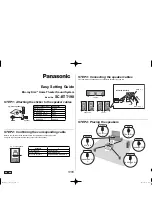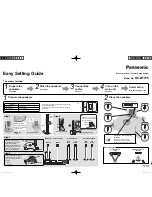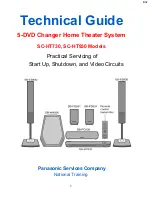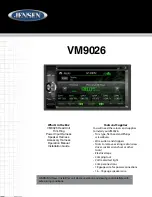
There is, of course, a second way to achieve direction
radiation. That is through directional devices. The most universal
directional device is a horn.
Figure 19
shows a single horn
with radiating device (a compression driver) mounted to the back
section of the horn. This small entrance, or throat, is coupled
to the air via the length of the horn and the horn mouth.
Figure 20
shows three horns oriented in a vertical fashion.
In this case, the minimum spacing achievable because of the
dimensions of the horn themselves is 9.25 inches.
Figure 21
is a polar presentation of the radiation from those
3 vertically oriented high-frequency horns at 5,000 hz. This
frequency was chosen because it is small compared to the
device spacing and the associated vertical polar pattern shown
in this figure should be familiar to anyone who’s ever tried to
make vertical stacks of high frequency horns in an attempt to
improve the directional radiation. Although the radiation is
certainly improved (the Q is increased and as a consequence
there is more gain on the major axis), examination of the figure
shows substantial polar lobing error (i.e. nulls of up to 15 dB
from the on axis reference). This vertical orientation of devices,
although producing an improved directivity index, would suffer
from substantial lobing errors as one walks from the +x axis
to the –y (that is, walk from the front of the array toward the
back of a venue covering the entire included vertical angle of
the venue).
Figure 22
shows an Array Show plot of a point source
and compares it to the Array Show plot of the directional
improvements in response associated with the application of
the horn. It can be seen that the directivity of the devices
is indeed improved, but as noted in the previous figure, an
attempt to generate a continuous line source of the devices
is limited by the physical dictates of the device dimensions.
Again, in this case, a 9.25 inch spacing is as close as they
can be physically positioned which limits Fmax for the highest
frequency of acceptable summing to below 2 kHz. Nevertheless,
horns are very useful devices and basically perform two
functions.
The first function is that of “directing” wave fronts that
are comparable to or shorter than the horn dimensions in a
given area. This is achieved simply by virtue of the sides and
top and bottom walls of the horn. Again, it should be reinforced,
the horn is only capable of this control of radiation where the
wavelengths are comparable or shorter than the dimensions of
the horn itself, (that is, for high frequencies, as defined earlier
in this paper.)
Figure 19
Figure 20
Figure 21
Figure 22
6






























